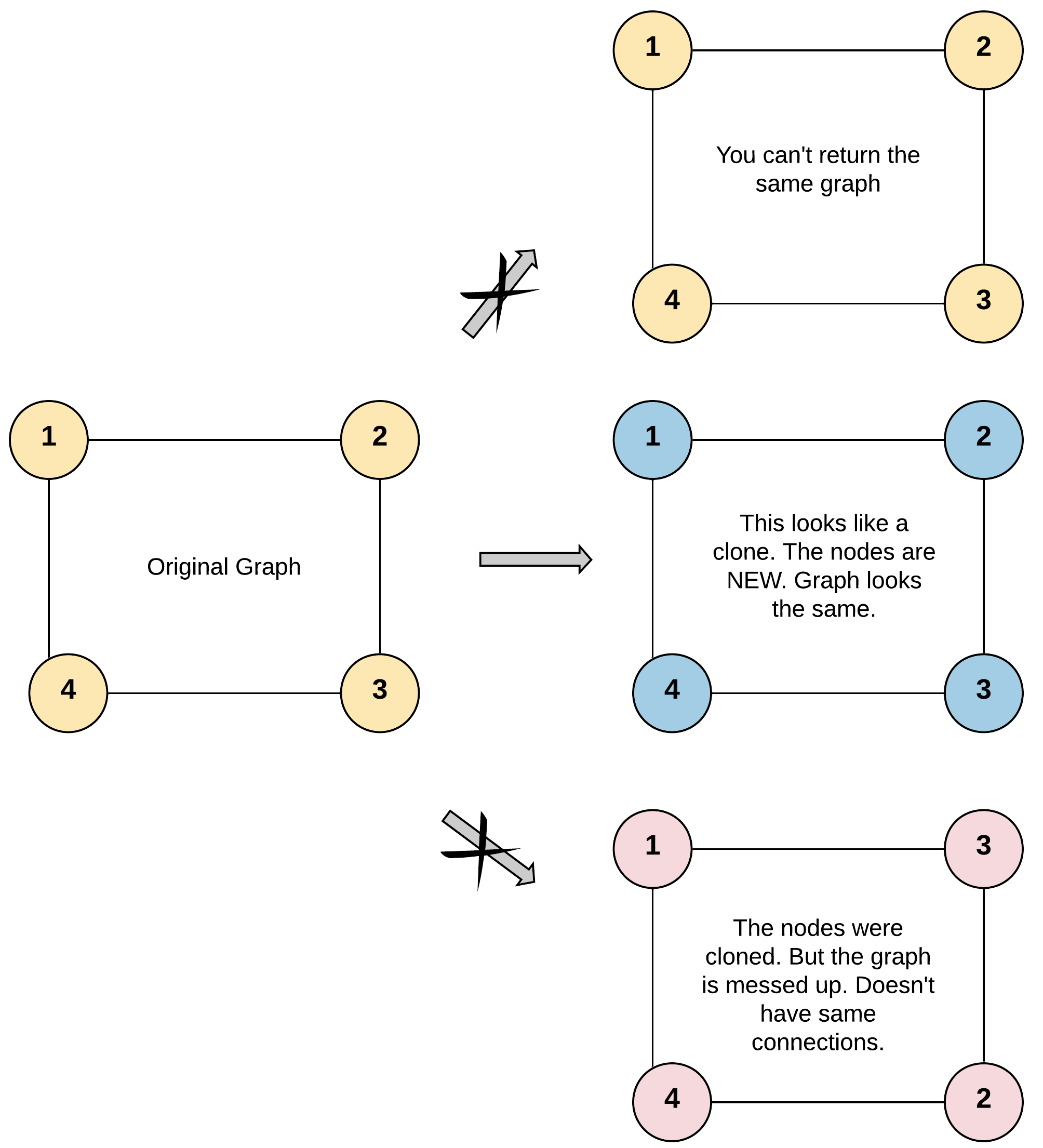2020-10-20 Daily-Challenge
Today I have done Ugly Number II on leetcode and leetcode's October LeetCoding Challenge with cpp.
Ugly Number II
Description
Write a program to find the n-th ugly number.
Ugly numbers are positive numbers whose prime factors only include 2, 3, 5.
Example:
Input: n = 10
Output: 12
Explanation: 1, 2, 3, 4, 5, 6, 8, 9, 10, 12 is the sequence of the first 10 ugly numbers.
Note:
1is typically treated as an ugly number.ndoes not exceed 1690.
Solution
ugly number with ugly solutions ;)
class Solution {
public:
int nthUglyNumber(int n) {
set<long long> s;
s.insert(1);
auto it = s.begin();
while(--n) {
s.insert(it, *it*2);
s.insert(it, *it*3);
s.insert(it, *it*5);
++it;
}
return *it;
}
};
October LeetCoding Challenge 20
Description
Clone Graph
Given a reference of a node in a connected undirected graph.
Return a deep copy (clone) of the graph.
Each node in the graph contains a val (int) and a list (List[Node]) of its neighbors.
class Node {
public int val;
public List<Node> neighbors;
}
Test case format:
For simplicity sake, each node's value is the same as the node's index (1-indexed). For example, the first node with val = 1, the second node with val = 2, and so on. The graph is represented in the test case using an adjacency list.
Adjacency list is a collection of unordered lists used to represent a finite graph. Each list describes the set of neighbors of a node in the graph.
The given node will always be the first node with val = 1. You must return the copy of the given node as a reference to the cloned graph.
Example 1:

Input: adjList = [[2,4],[1,3],[2,4],[1,3]]
Output: [[2,4],[1,3],[2,4],[1,3]]
Explanation: There are 4 nodes in the graph.
1st node (val = 1)'s neighbors are 2nd node (val = 2) and 4th node (val = 4).
2nd node (val = 2)'s neighbors are 1st node (val = 1) and 3rd node (val = 3).
3rd node (val = 3)'s neighbors are 2nd node (val = 2) and 4th node (val = 4).
4th node (val = 4)'s neighbors are 1st node (val = 1) and 3rd node (val = 3).
Example 2:

Input: adjList = [[]]
Output: [[]]
Explanation: Note that the input contains one empty list. The graph consists of only one node with val = 1 and it does not have any neighbors.
Example 3:
Input: adjList = []
Output: []
Explanation: This an empty graph, it does not have any nodes.
Example 4:

Input: adjList = [[2],[1]]
Output: [[2],[1]]
Constraints:
1 <= Node.val <= 100Node.valis unique for each node.- Number of Nodes will not exceed 100.
- There is no repeated edges and no self-loops in the graph.
- The Graph is connected and all nodes can be visited starting from the given node.
Solution
I'm trying not to memorize where node is, but failed :D
/*
// Definition for a Node.
class Node {
public:
int val;
vector<Node*> neighbors;
Node() {
val = 0;
neighbors = vector<Node*>();
}
Node(int _val) {
val = _val;
neighbors = vector<Node*>();
}
Node(int _val, vector<Node*> _neighbors) {
val = _val;
neighbors = _neighbors;
}
};
*/
class Solution {
vector<Node*> nodes = vector<Node*>(101, nullptr);
public:
Node* cloneGraph(Node* node) {
if(!node) return nullptr;
if(nodes[node->val]) return nodes[node->val];
Node* root = new Node(node->val);
nodes[node->val] = root;
for(auto neighbor: node->neighbors) {
root->neighbors.push_back(cloneGraph(neighbor));
}
return root;
}
};